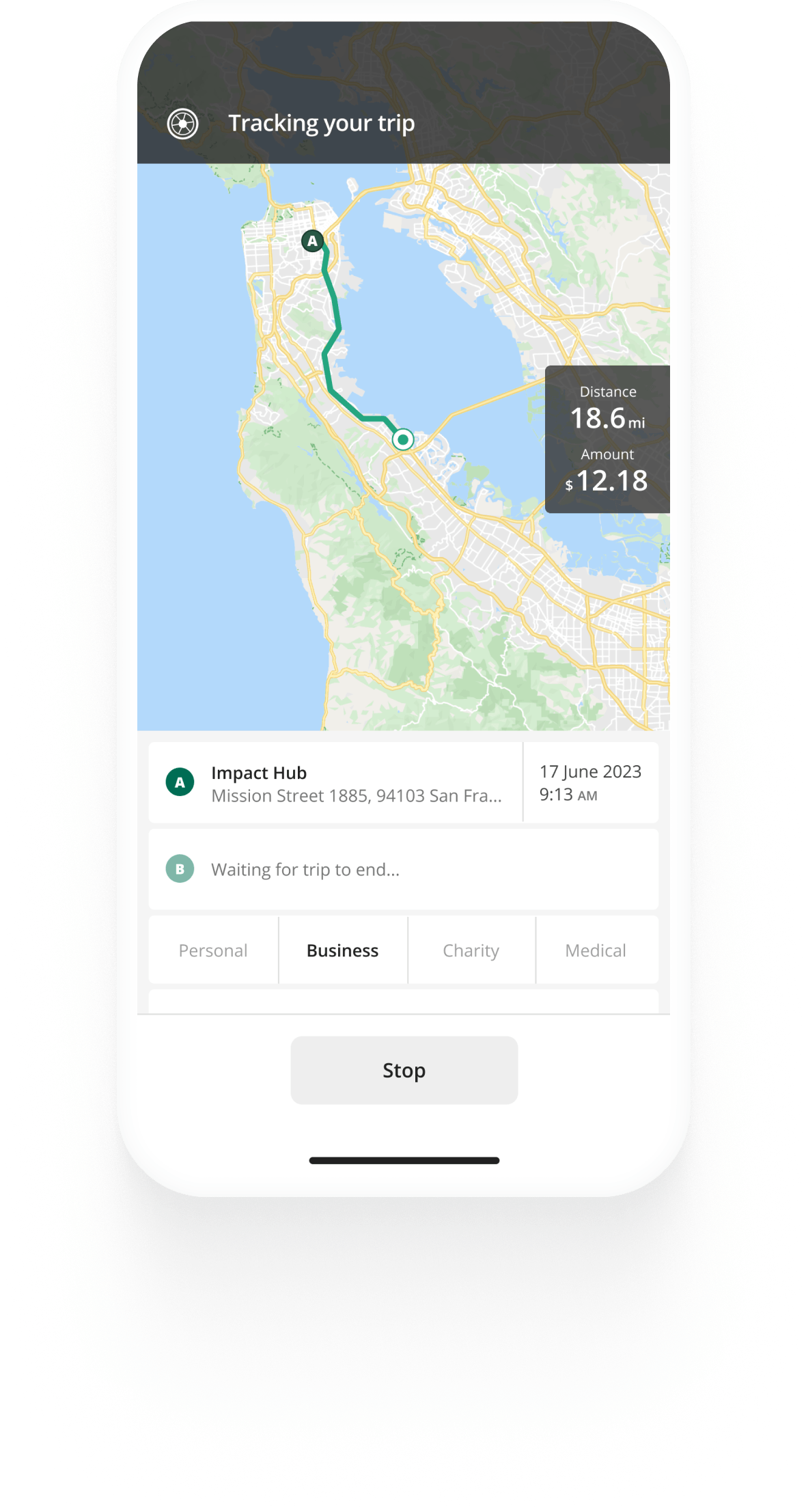Track mileage automatically
Get startedHow to File Uber Eats Taxes
As an Uber Eats driver, you’re an independent contractor. That means taxes aren’t taken out of your paycheck automatically; you have to report and pay taxes on your own. Find out where to access your Uber Eats tax form, how to file non-employee income, and what tax write-offs you may be eligible for.
Access your Uber Eats 1099 form
Because delivery drivers are independent contractors, you won’t receive an Uber Eats W2 – those are reserved for employees. Instead, you’ll get a 1099 form, which shows how much you earned through the platform during the tax year. 1099s are issued for any taxpayer who earns $600 or more in non-employee income from a company.
To find your 1099, check the Tax Information tab on your online account. Alternatively, you can opt into receiving a mailed copy on the Tax Settings tab of your account. Uncheck the “Go Green!” box to receive a paper copy.
There are potentially three types of 1099s you may receive from Uber Eats:
- 1099-K: In most states, this form is used to report on-trip transactions for drivers who earned more than $20,000 and performed more than 200 rides during the year.
- 1099-NEC: Uber provides a copy of this form if you receive at least $600 in non-ride payments. This could include referrals or promotions through the platform.
- 1099-MISC: This form is sent to drivers who earn at least $600.
Uber’s tax forms are available online before January 31 of the following year. For instance, when filing your 2024 taxes, your forms would be available in January 2025 leading up to the April tax deadline.


Mileage tracking made easy
Trusted by millions of drivers
Automate your logbook Automate your logbook

Automatic mileage tracking and IRS-compliant reporting.
Get started for free Get started for freeReport income for both Uber and Uber Eats
When filing your taxes, you must report income for all delivery platforms you earn through. If you drive for both delivery and rideshare, the way you’ll access your tax forms depends on how you set up your accounts.
If you use the same email address for both accounts, your earnings are combined and you’ll get one tax summary. But if you use different email addresses, you’ll receive two separate tax summaries.
Gather your tax documentation
As you prepare to file your taxes, gather all of the documentation required to accurately report your income and expenses. Your Uber Eats 1099 will include any tips paid through the app as part of your gross earnings total.
In addition to 1099 forms for any type of self-employment income, you also need to report any other income sources. For instance, if you’re an employee at another company, you’ll receive a W2 with the amount you earned for the year.
Finally, gather proof of your driving-related expenses in order to take as many Uber Eats tax deductions as possible. This may help lower the amount of tax owed on your earnings.
File your federal tax return with your Uber Eats earnings
The standard deadline for filing your federal tax return is typically April 15 of the following year.
When filing, report your self-employment income and expenses on the IRS Schedule C form. When all of your forms are complete, you can file your taxes in one of three ways:
- IRS Free File
- Online software
- Hire a tax preparer
Any taxes owed are due on the same day as the filing deadline.
Account for self-employment income throughout the year
The spring deadline is not the only tax date you need to be aware of as an independent contractor with Uber Eats. Any self-employment income is subject to estimated quarterly taxes that must be paid throughout the year you’re earning. Here are the typical deadlines for when to pay your estimated taxes for each quarter.
| Payment period | Due date |
|---|---|
| January 1 through March 31 | April 15 |
| April 1 through May 31 | June 15 |
| June 1 through August 31 | September 15 |
| September 1 through December 31 | January 15 of the following year |
Plan for higher self-employment taxes
When estimating your quarterly taxes, remember that the self-employment tax rate is higher than your tax rate as an employee. Self-employment tax is 15.3% of your earnings and includes social security and Medicare taxes. When you’re an employee, your employer pays half this amount on your behalf. But when you’re self-employed, you’re essentially your own boss. That means you have to pay the full tax rate.
Tax write-offs for Uber Eats drivers
There are many potential tax deductions you may be eligible for as an Uber Eats driver. Some of the most popular include:
- Startup costs
- Vehicle repairs and maintenance
- Mileage
- Parking fees
- Tolls
- Supplies used while driving
- Cell phone
- Fees
- Business related insurance
Mileage is a huge potential deduction for drivers. Although Uber Eats provides a record of your online miles in your tax summary, you can track your mileage across multiple delivery or rideshare platforms using an IRS-compliant mileage tracking app.
FAQ

Tired of logging mileage by hand?
Effortless. IRS-compliant. Liberating.
Gig Driver's Guide
- Uber Eats Background Check
- Uber Eats Driver Requirements
- Uber Eats Taxes
- Uber Vehicle Requirements
- Uber Driver Requirements
- Uber Driver Taxes
- DoorDash Driver Requirements
- DoorDash Background Check
- DoorDash Taxes
- DoorDash Earnings
- DoorDash Insurance
- Lyft Driver Requirements
- Lyft Background Check
- Lyft Taxes
- Spark Driver Requirements
- Spark Driver Taxes
- Instacart Shopper Requirements
- Instacart Taxes
- Delivery Driver Tax Deductions